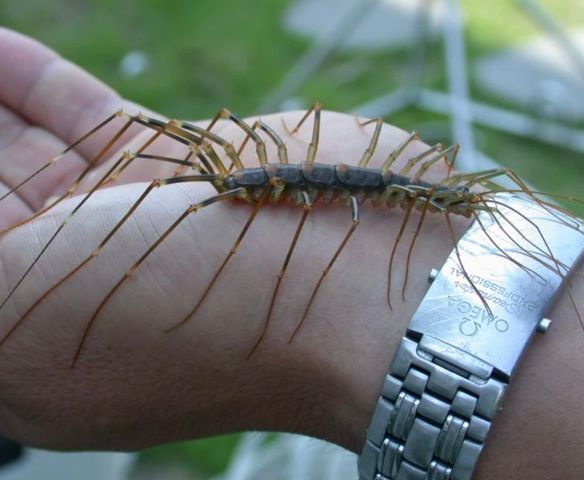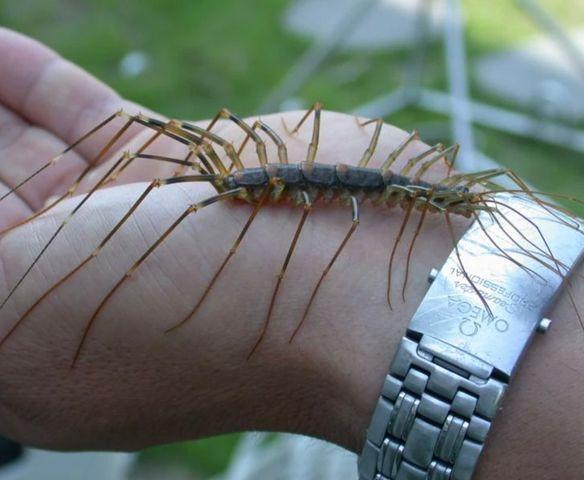When you see an insect in your home, what’s your first reaction? For many, it’s to grab the nearest object and squash it. This instinct is understandable, especially considering that some insects can deliver painful stings or spread harmful toxins. But before you decide to eliminate every creepy crawler you encounter, there’s one insect you might want to think twice about: the house centipede.

Yes, those fast-moving, multi-legged creatures that often send chills down your spine actually play a helpful role inside your home. While they might look intimidating, there’s more to house centipedes than meets the eye. After reading this article, you might reconsider your approach the next time you spot one of these critters scurrying across your bathroom floor.
House centipedes can certainly be unsettling to look at, with their long legs and swift movements. But these seemingly scary creatures are actually working to keep your home free of other pests. House centipedes are nature’s built-in pest control, helping to eliminate a wide range of unwelcome guests, including cockroaches, spiders, silverfish, bedbugs, and ants. In fact, their appetite for other arthropods is what makes them so valuable in your home. With around 20 legs, these small but efficient hunters have a knack for catching and consuming just about any small insect they come across.
Of course, this doesn’t mean you should start welcoming centipedes into your home in large numbers. But if you come across one or two, you might want to think twice before reaching for the bug spray. Instead, consider leaving them alone or gently relocating them outside as a way of saying “thanks” for their efforts in keeping your home pest-free.
While house centipedes may cause a moment of panic, especially for children or those who are squeamish, it’s worth noting that they’re generally harmless to humans. They don’t spread germs like some insects, nor are they strong enough to cause significant harm. In fact, their delicate bodies make them more vulnerable than menacing. Their primary goal is to hunt other pests, not to cause you any trouble.
If you’re still wary about letting house centipedes live in your home, keep in mind that squashing one might come with unintended consequences. Some insects, when killed, can release eggs or baby insects, potentially creating an even bigger infestation problem. For instance, crushing a spider could lead to the sudden release of hundreds of baby spiders—a sight that’s far worse than a lone centipede running across the floor!
While centipedes themselves are mostly harmless, not all insects share this trait. Some insects pose serious health risks, transmitting diseases that can be life-threatening without proper medical care. Here are a few dangerous insects to watch out for indoors:
- Bullet Ants: Known for their excruciating bites that feel like being shot, these large ants are mostly found in the jungles of Paraguay and Nicaragua.
- Botfly Larvae: The real danger here comes from the larvae, which can burrow under the skin, causing infections as they grow.
- Fleas: These blood-sucking insects cause itchy bites that can lead to skin infections and irritations.
- Fire Ants: They deliver painful stings that result in white pustules lasting for weeks, and some species’ venom can trigger allergic reactions.
- Kissing Bugs (Chagas Disease): These bugs transmit a parasite responsible for up to 12,000 deaths annually.
- Giant Japanese Hornets: Their potent stings can be lethal, claiming around 40 lives each year.
- Tsetse Flies: These flies spread sleeping sickness, which causes around 500,000 deaths in Africa annually.
- Killer Bees: Known for their aggressive attacks in large groups, these bees can be deadly due to the sheer number of stings.
- Driver Ants: With powerful mandibles, these ants can kill small animals and deliver painful bites to humans.
- Mosquitoes: Considered the deadliest insects, mosquitoes are responsible for about 1 million deaths each year, spreading diseases like malaria, West Nile virus, and yellow fever.
In summary, while your first reaction to a house centipede might be to get rid of it, it’s worth considering its role in managing other pests. While some insects pose serious health risks, house centipedes are generally helpful, non-threatening creatures that contribute to a healthier home environment. So, the next time you spot one, remember that it’s more of a friend than a foe.

Leave a Reply